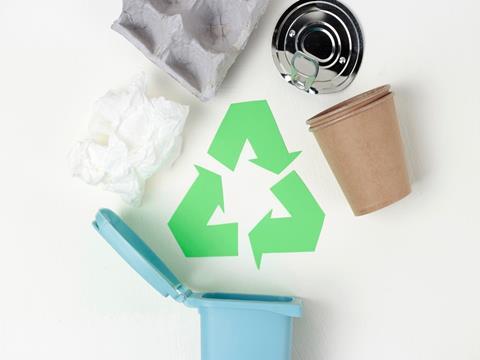
Smithers has released a report outlining the packaging industry’s next steps in the pursuit of sustainability, identifying long-term solutions to improve the sourcing, manufacture, use, disposal, and recovery of packaging over the next decade.
Although the report acknowledges that ‘some of the easiest carbon-saving steps have already been taken’, it goes on to identify necessary areas of improvement.
Reusable and refillable packaging is said to be rising in popularity across the industry, growing by 5% every year, although the format is still in development. Smithers warns that both companies and consumers will need to adjust their thinking for such products to make a significant difference, limiting their short-term impact.
The report suggests that the development of automated sorting equipment and advanced image processing in material recovery facilities, especially those dealing with plastic, will encourage the use of easy-to-process formats or mono-materials, and necessitate sorting-friendly marking, labelling and packaging designs.
The wider utilisation of recycled content, particularly post-consumer recycled (PCR) polymer resins, is also highlighted as a next step. To increase the amount and quality of PCR materials available on the market, Smithers suggests the expansion of collection schemes for harder-to-recycle materials, and the commercialisation of the chemical recycling plants that convert mixed plastic inputs into resins. Where recovery and reuse are not viable options, the development of biodegradable plastics and similar materials is offered as an alternative.
Accessing these materials through renewable sources is of utmost importance, according to Smithers. From PCR to recovered pulp, metal, and glass materials, the industry is taking steps in the right direction, but the report further encourages the conversion of non-edible biomass sources such as agricultural waste into packaging materials.
Smithers’ analysis also considers the impact of taxes and prohibitions on the use of certain materials, requirements for the minimum content of PCR stocks, packaging design requirements to encourage recyclability, and the implementation of comprehensive extended producer responsibility (EPR) schemes.
Another report produced by Smithers in February estimated that the market value of metal packaging has increased to $127.3 billion this year, crediting the COVID-19 pandemic for changing consumer practices and increasing the demand for recyclable packaging.
It has also predicted that the track-and-trace packaging industry will reach a total value of $2.5 billion by 2027 as e-commerce booms and anti-counterfeiting measures strengthen.

















No comments yet